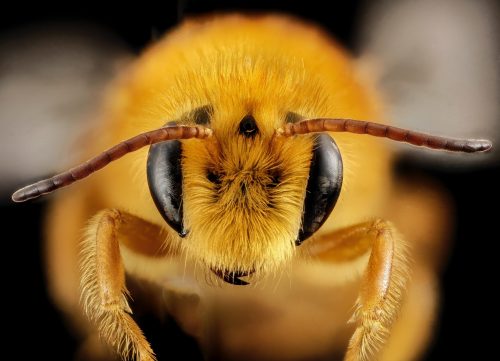Buzz-pollination: The Secret Handshake Between Flowers and Bees
Fields covered: Ecology

Pollination is one of the most important interactions between plant and animal species. Flowering plants rely on animals to transfer pollen from one flower to another, leading to fertilization and production of fruits and seeds, while the animals feed on the nectar and some of the pollen from the flowers. The animals that transfer pollen are called pollinators and they could be insects such as bees, flies, and butterflies, or even birds and bats! However, random visitations of pollinators to flowers are not efficient transferring pollen between plants of the same species. To make things worse, there are pollen thieves—animals that take pollen from flowers without acting as pollinators—which decrease the amount of pollen available to legitimate pollinators. To increase pollination efficiency by attracting specific types of pollinators and reducing pollen access to others, over 20,000 plant species have evolved a “secret handshake” with certain bee species—buzz-pollination.
Flowers involved in buzz-pollination generally have poricidal anthers, which means the anthers have slits at the tips where pollen inside the anther is released (imagine an upside-down bottle of talcum powder). Insects that do not buzz-pollinate can only get small amounts of pollen by probing around the slits. On the other hand, buzz-pollinators such as certain groups of bees (bumblebees, carpenter bees, and stingless bees etc.) cling onto the anthers, grab the base of the anthers with their mandibles, and contract their thoracic muscles to create vibrations. The vibrations shake pollen grains from the anthers, which are then collected by the bees. By restricting pollen access to buzz-pollinators, plants are able to reduce pollen wastage and maximize pollen transfer to flowers of the same species.
Research into buzz-pollination showed that buzzes with larger amplitude and longer durations ejected more pollen. Furthermore, bees with larger mass can create buzzes with higher amplitudes, leading to better pollen collection yields, which suggests that there could be evolutionary advantages for increased mass in buzz-pollinators. Another study showed that rather than limiting pollen access by having poricidal anthers, certain plants evolved to have closed flowers, where the sepals of the flowers do not open at maturity. The flowers remain closed like a bud and thus only buzz-pollinators are able to obtain pollen from them.
Buzz-pollination shows an interesting variation of typical plant-pollinator interactions. Next time you see a bee pollinating a flower, take a closer look, it could be a professional buzz-pollinator!
References:
Armbruster, W. S., Lee, J., Edwards, M. E., & Baldwin, B. G. (2013). Floral paedomorphy leads to secondary specialization in pollination of Madagascar Dalechampia (Euphorbiaceae). Evolution: International Journal of Organic Evolution, 67(4), 1196-1203.
Buchmann, S. L. (1983). Buzz pollination in angiosperms. Buzz pollination in angiosperms., 73-113.
De Luca, P. A., & Vallejo-Marin, M. (2013). What’s the ‘buzz’ about? The ecology and evolutionary significance of buzz-pollination. Current opinion in plant biology, 16(4), 429-435.
De Luca, P. A., Bussiere, L. F., Souto-Vilaros, D., Goulson, D., Mason, A. C., & Vallejo-Marín, M. (2013). Variability in bumblebee pollination buzzes affects the quantity of pollen released from flowers. Oecologia, 172(3), 805-816.




